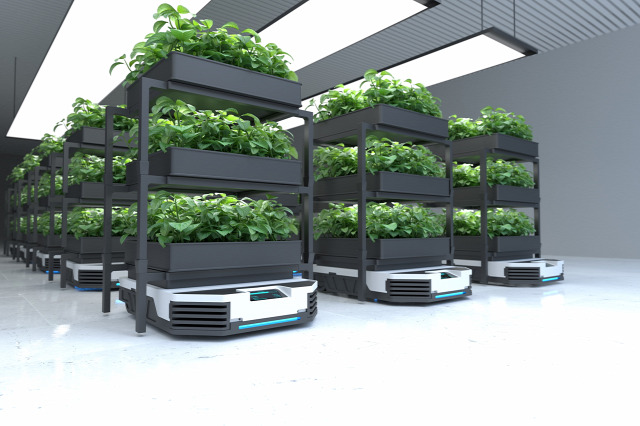
The transportation sector is undergoing a significant transformation as electric commercial vehicles (ECVs) become increasingly prevalent. This shift is driven by technological advancements, environmental concerns, and evolving regulatory frameworks. Industries worldwide are adopting ECVs to enhance efficiency, reduce carbon footprints, and gain a competitive edge.
This article delves into the emerging trends in the ECV market, examines how various sectors are leveraging these developments, and provides key market data, including compound annual growth rates (CAGR) and future projections.
Market Overview: Accelerated Growth Trajectory
According to BIS Research, the global electric commercial vehicle market was valued at $89.95 billion in 2024 and it is expected to grow at a CAGR of 20.13% to reach $563.13 billion by 2034 during the forecast period of 2024-2034.
Key Drivers of Growth:
- Stringent Emission Regulations: Governments worldwide are implementing rigorous emission standards, prompting businesses to transition to electric fleets to comply with these regulations.
- Advancements in Battery Technology: Improvements in battery efficiency and reductions in costs are making ECVs more accessible and practical for various applications.
- Corporate Sustainability Initiatives: Companies are increasingly prioritizing sustainability, and adopting ECVs aligns with their environmental goals and enhances brand image.
Emerging Trends in the Electric Commercial Vehicle Market
Diverse Vehicle Offerings:
- Electric Delivery Vans: Companies like Rivian have expanded their electric van sales to all commercial fleets, catering to the growing demand for sustainable last-mile delivery solutions.
- Heavy-Duty Electric Trucks: Manufacturers are introducing electric heavy-duty trucks capable of long-distance travel, addressing the needs of industries such as logistics and construction.
Infrastructure Development:
- Charging Networks: The expansion of charging infrastructure is crucial for the widespread adoption of ECVs. Investments are being made to establish extensive networks to support fleet operations.
- Renewable Energy Integration: Utilizing renewable energy sources for charging ECVs further reduces environmental impact and supports corporate sustainability goals.
Technological Innovations:
- Autonomous Capabilities: The integration of autonomous driving technologies in ECVs is being explored to enhance operational efficiency and safety.
- Telematics and Fleet Management: Advanced telematics systems are enabling real-time monitoring and optimization of fleet performance, leading to cost savings and improved logistics.
Collaborations and Partnerships:
- Public-Private Partnerships: Collaborations between governments and private companies are facilitating the development of supportive policies and infrastructure for ECV adoption.
- Industry Alliances: Companies are forming alliances to share resources and knowledge, accelerating innovation and deployment of electric commercial vehicles.
Request for a sample research report on the global electric commercial vehicle market
Key Market Segmentation
Segmentation 1: by Application
- Industrial
- Mining and Construction
- Logistics
- Passenger Transportation
Segmentation 2: by Vehicle Type
- Pickup Trucks
- Medium Duty and Heavy-duty Trucks
- Vans (Light and Full-size Vans)
- Buses and Coaches
Segmentation 3: by Propulsion Type
- BEV
- Hybrid (PHEV, HEV, and FCEV)
Segmentation 4: by Range
- Below 200 Km
- 200-500 Km
- Above 500 Km
Segmentation 5: by Region
- North America
- Europe
- Asia-Pacific
- Rest-of-the-World
Industry Applications and Competitive Advantages
Various industries are leveraging ECVs to enhance their operations and stay competitive.
Logistics and Delivery Services:
- Cost Efficiency: ECVs offer lower operating costs compared to traditional vehicles, resulting in significant savings over time.
- Regulatory Compliance: Utilizing electric fleets ensures adherence to emission regulations, avoiding potential fines and restrictions.
Public Transportation:
- Environmental Impact: Electric buses contribute to cleaner air in urban areas, aligning with public health objectives.
- Operational Efficiency: Reduced maintenance requirements and fuel costs make ECVs a financially viable option for transit authorities.
Construction and Mining:
- Noise Reduction: Electric machinery operates more quietly, minimizing noise pollution on job sites.
- Enhanced Safety: The use of ECVs reduces exposure to hazardous emissions for workers, promoting a safer work environment.
Retail and E-commerce:
- Brand Image: Companies adopting ECVs demonstrate a commitment to sustainability, enhancing their reputation among environmentally conscious consumers.
- Operational Flexibility: Electric delivery vehicles are well-suited for urban environments, offering flexibility in navigating traffic and accessing restricted areas.
Get more insights on the automotive market research reports.
Future Market Outlook
The electric commercial vehicle market is poised for continued growth, driven by technological advancements, supportive policies, and increasing environmental awareness. Key projections include:
- Technological Advancements: Ongoing research and development efforts are anticipated to yield more efficient batteries, enhanced autonomous capabilities, and improved vehicle designs.
- Policy Support: Governments are likely to implement further incentives and regulations to encourage the adoption of ECVs, including tax benefits, subsidies, and stricter emission standards.
- Infrastructure Development: Continued investment in charging infrastructure and renewable energy integration will support the scalability of ECV operations.
Conclusion
The transition to electric commercial vehicles represents a transformative shift in the transportation and logistics sectors. By embracing ECVs, industries can achieve operational efficiencies, comply with evolving regulations, and meet sustainability targets. As the market continues to evolve, staying informed about emerging trends and strategic opportunities will be crucial for businesses aiming to maintain a competitive edge in this rapidly changing landscape.





